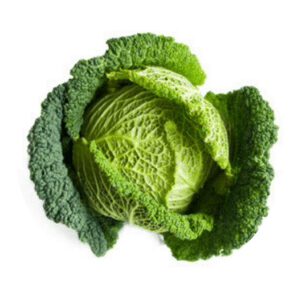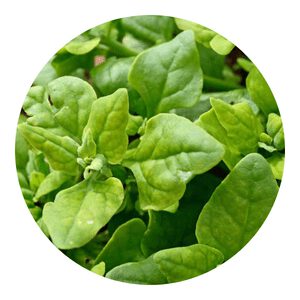Organic vegetables to plant in November
Although November may signal the end of growing season for many gardeners, there are still a few hearty vegetables that can be planted.
brassica oleracea, also known as kale or collards, is a leafy green that is perfect for planting in the fall. Kale is a cool weather crop that can withstand frost and even some snow.
Another option for late season planting is root vegetables like turnips, carrots, and beets.
These vegetables can also tolerate cold weather and will actually improve in flavor after being exposed to a light frost.

November Menu
Cabbage
Cabbage is a vegetable that can be planted in November. This leafy green vegetable is a cool weather crop and can tolerate frost.
Cabbage can be grown in raised beds or in the ground. When planting, space the cabbage plants 18-24 inches apart.
Cabbage needs moist, well-drained soil and full sun to partial shade. Water cabbage plants regularly, especially during dry periods. Harvest cabbage when the heads are 6-8 inches in diameter.
Kale
Kale is a great vegetable to plant in November. It is a hardy vegetable that can withstand cold temperatures, so it is perfect for planting in the fall.
Kale is also a nutrient-rich vegetable, providing vitamins A, C, and K. It is also a good source of fiber and antioxidants.
Planting kale in November will give you a head start on your spring garden, and you will be able to enjoy fresh kale all season long.
Brussels sprouts
Although Brussels sprouts are typically associated with winter, they are actually best planted in the fall.
In November, gardeners in most parts of the country can still sow Brussels sprouts seeds directly in the ground.
The key to successful Brussels sprouts is to start them early enough in the season so that they have plenty of time to mature before the first frost.
Brussels sprouts are a cool-weather crop and will tolerate light frosts, but they need at least 60 days of frost-free weather to mature.
In areas with short growing seasons, it’s best to start Brussels sprouts indoors in late summer and transplant them into the garden in early fall.
Whether you sow them indoors or out, Brussels sprouts seeds should be planted about 1/2 inch deep in loose, well-drained soil.
Onions
Onions are a cool-season crop that can be planted in November in most parts of the country.
They take about three months to mature, so if you plant them now, they should be ready to harvest in February or March.
To plant onions, first prepare the soil by tilling it and adding some compost or other organic matter.
Then, sow the seeds about 1/2 inch deep and 2 inches apart. Once they sprout, thin them out so that they’re about 4 inches apart.
Onions prefer full sun and well-drained soil. Water them regularly, especially during dry periods. Fertilize them every few weeks with a Organic fertilizer.
When the tops start to yellow and fall over, stop watering and fertilizing them. This will help them to mature more quickly.
Harvest the onions when the skins turn brown and start to loosen.
Prepare the garden for winter, And plant these vegetables in November: Parsnips, carrots, rutabagas, and turnips— They'll help to keep you warm all season. Plant cabbage and kale for St. Patrick's Day, And don't forget the Brussels sprouts For Christmas dinner! Onions, leeks, and shallots— Your kitchen will be smelling great.
Chappy The Gardener
Garlic
November is the perfect time to plant garlic.
This versatile vegetable can be used in so many dishes, from pasta to roasted chicken.
Plus, it’s easy to grow and doesn’t take up much space. Just make sure to plant the cloves pointed up and about an inch deep.
Within a few weeks, you’ll see green shoots poking through the soil.
Water regularly and give your garlic plenty of sun. Come summer, you’ll have a big harvest of delicious garlic bulbs.
Leeks
Leek is a vegetable that belongs to the onion family. It is a biennial plant, which means that it takes two years to complete its life cycle. Leeks are usually planted in the fall, and they are harvested in the spring.
November is the perfect time to plant leeks. The cool weather helps them to develop a deep, rich flavor.
When planting leeks, be sure to choose a sunny spot in your garden. They need well-drained soil and plenty of water.
Leeks can be grown from seed or transplants. If you are planting seeds, start them indoors about six weeks before you plan to transplant them into your garden.
To harvest leeks, wait until they are at least eight inches tall. Cut them off at the base of the plant using a sharp knife.
Carrots
Carrots are a great vegetable to plant in November. They are a cool weather crop and can tolerate frost, so they are perfect for planting in cooler climates.
Carrots need full sun and well-drained, loose soil to grow properly. Amend your soil with compost or manure before planting to give the carrots a nutrient-rich environment to grow in.
Sow carrot seeds about ½ inch deep and 1 inch apart in rows. When the seedlings emerge, thin them out so that they are about 3 inches apart.
Keep the carrots watered during the growing season, especially during dry spells. Carrots are ready to harvest when they are about ¾ of an inch in diameter.
Pull them from the ground carefully so as not to damage the roots of the remaining plants.
Turnips
Turnips are one of the vegetables that can be planted in November.
They are a root vegetable that is part of the Brassica family, which also includes broccoli, cabbage, and kale.
Turnips can be white or purple, and they have a slightly sweet flavor.
To plant turnips, first loosen the soil with a rake. Then make small holes in the ground for the seeds. Plant the seeds about an inch apart and ½ an inch deep.
After planting, water the area well. Turnips will germinate in about 10 days.
Once they have germinated, thin out the seedlings so that there is only one plant per hole.
Keep watering them regularly, especially during dry periods. Harvest turnips when they are about 3-4 inches in diameter.
Beetroot
Beetroot is a great vegetable to plant in November. It is a hardy vegetable that can withstand colder temperatures, so it is perfect for planting in the fall.
Beetroot is also a fast-growing vegetable, so you will be able to harvest it in just a few months.
To plant beetroot, simply sow the seeds in well-drained soil. You can sow them directly into the ground or start them indoors and then transplant them outdoors.
Once the seedlings have emerged, thin them out so that they are spaced about 3-4 inches apart. Beetroot will be ready to harvest in about 60 days.
Spinach
Although November may signal the end of growing season for many vegetables, spinach is one that can still be planted.
This leafy green is a cool weather crop, so it thrives in the later months when temperatures are milder.
If you live in an area with a longer growing season, you can sow your spinach seeds directly into the ground.
Otherwise, start them indoors and transplant them outdoors once they have germinated and grown large enough to handle.
Spinach is a fast-growing crop, so you will be able to enjoy its bounty within weeks of planting it.
The key to success is to keep the soil moist since this vegetable does not tolerate drought well.
When harvesting your spinach, cut the leaves off at the base of the plant rather than pulling them up by the root.
Rocket
Although most vegetables have come to the end of their growing season in November, there are still a few that thrive in the cooler weather.
Rocket is one of these vegetables. A member of the mustard family, rocket has a peppery flavor that goes well in salads and as a garnish.
Rocket is easy to grow from seed. Just sow the seeds in well-drained soil in full sun or partial shade and keep them moist until they germinate.
Once they’ve sprouted, thin out the seedlings so that they’re about 10 centimeters apart. Keep watering regularly and you’ll be able to harvest your crop in about 4-6 weeks.
Lettuce
Lettuce is a cool weather vegetable that can be planted in November in many parts of the country.
Lettuce prefers full sun but will tolerate some shade, especially in hot weather.
The plants need moist, well-drained soil. Lettuce can be direct seeded or started indoors and transplanted.
Lettuce is a fast-growing crop and can be harvested 50 to 60 days after planting. For a continuous supply of lettuce, plant a new crop every two to three weeks.
When harvesting lettuce, cut the outer leaves first, leaving the inner leaves to develop. Lettuce can be harvested by hand or with a sharp knife.
Parsley
Parsley is a cool weather herb that can be planted in November in most climates.
This hardy herb is easy to grow from seed or transplants and can be used fresh or dried.
Parsley prefers full sun but will tolerate some shade, and well-drained soil.
Amend your soil with compost before planting and water regularly.
To harvest, cut outer stems about an inch from the base of the plant.
You can dry parsley by hanging it upside down in a dark, dry place for about two weeks.
Thyme
November is the time to plant thyme.
Thyme is a perennial herb that grows in most temperate climates. It is often used as a culinary herb, but can also be used for its medicinal properties.
Thyme can be planted in November and will grow best if given some shelter from the cold weather.
Rosemary
Rosemary is an herb that can be planted in November. It grows best in full sun, but can tolerate some shade.
Rosemary does not like wet soil, so make sure to plant it in a well-drained area. This herb is drought tolerant once established.
Rosemary can be used fresh or dried in cooking. It pairs well with chicken, lamb, and fish dishes.
In conclusion, planting vegetables in November provides many benefits. The cooler temperatures help vegetables grow more slowly, allowing them to develop more flavor.
Additionally, the fall rains help to provide the plants with the water they need to thrive.
Finally, planting in November gives gardeners a chance to extend their growing season and enjoy fresh vegetables into the winter months.
Helps Us Grow – Share If You Like
















